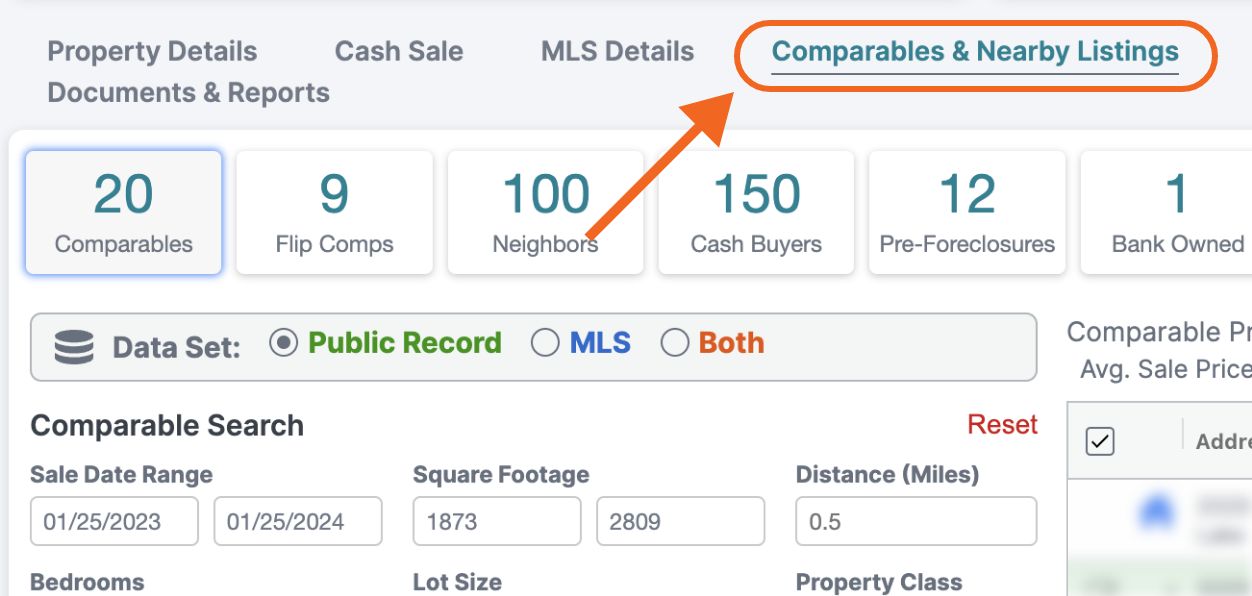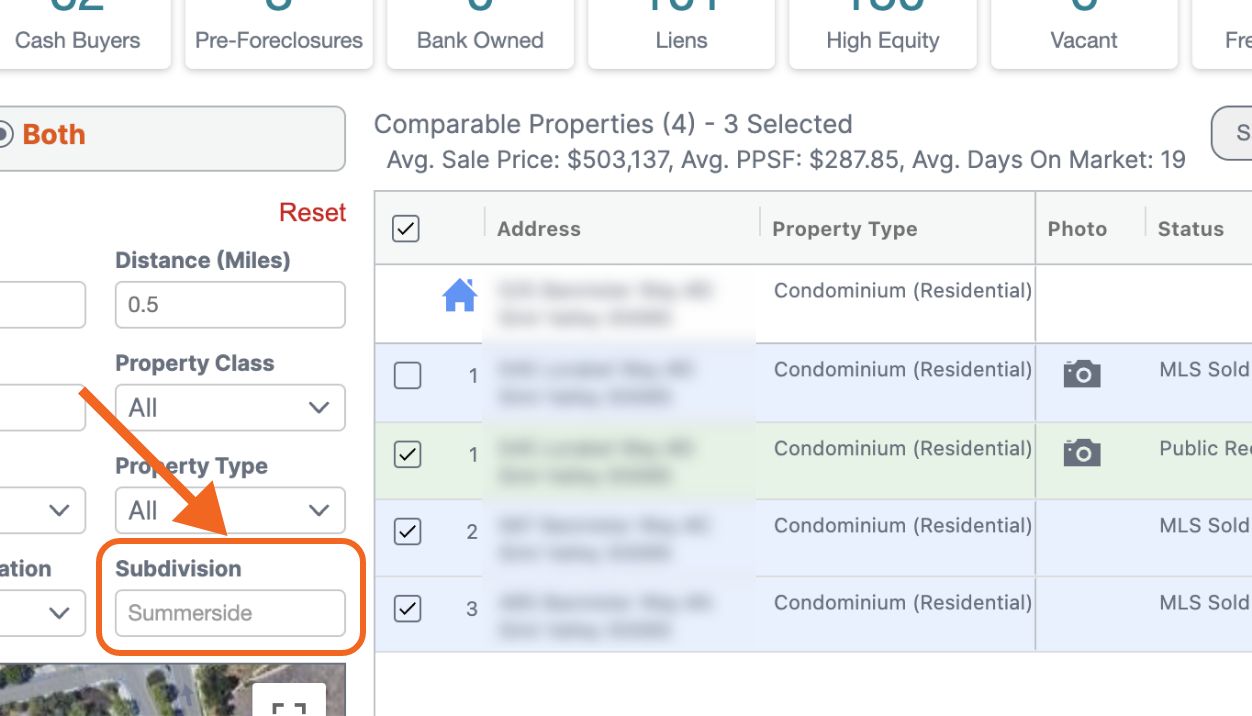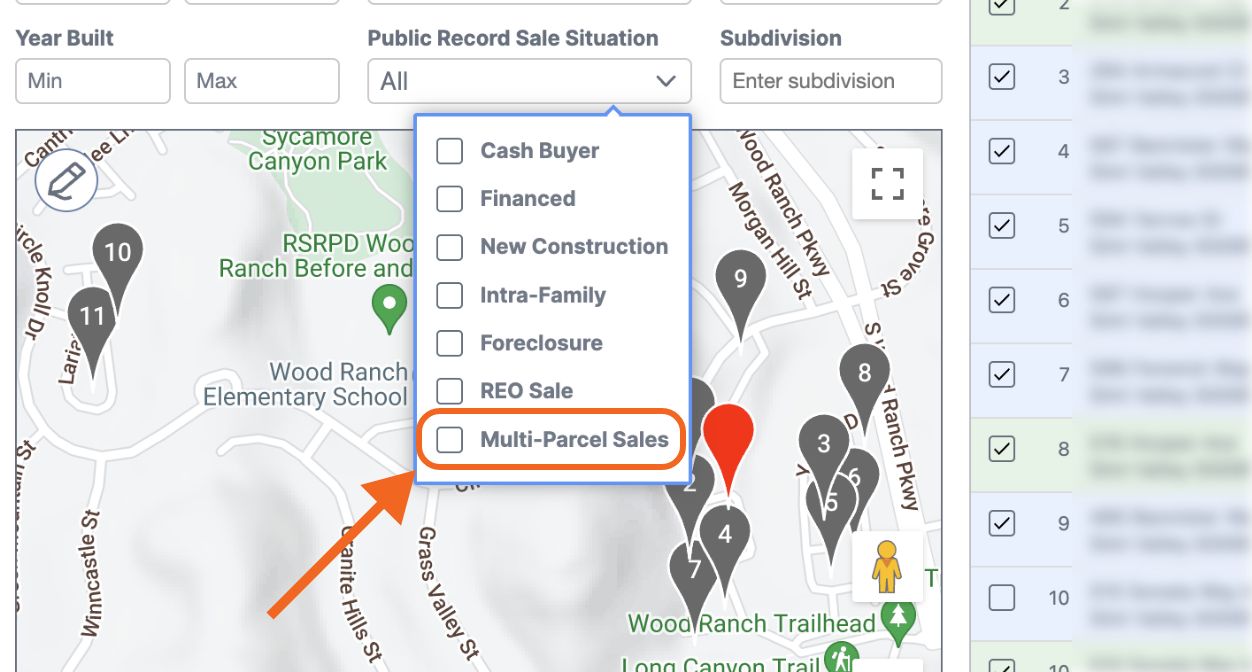At the heart of our business model is our commitment to user satisfaction, as we deeply value our loyal customers who have played a pivotal role in shaping our platform into what it is today.
We’ve heard your requests for subdivision comping to return. Well, we’re thrilled to announce that by popular request, it’s BACK!
What does subdivision mean?
Often referred to as a “neighborhood,” a subdivision is a plot of land that has been divided into two or more parcels to maximize the usage of the land. It is commonly used in residential development to enhance the value of the land within the guidelines of applicable zoning regulations. This method can also apply to unit developments such as apartments and even business and industrial zones.
Example: Let’s say a large acre of land in a particular zip code was historically assigned as farmland (or is just a house on a lot with significant acreage). The city/county has now determined this land can be divided into more parcels to allow a developer to build two or more homes or townhouses on the land. Or, the vacant land parcels can be sold to other developers.
The Power of Comping With Subdivisions
Utilizing subdivision data when running comparables is instrumental in improving accuracy.
The goal of running comparables is to consider the unique features of a subject property and use them to sift through historical sales data for similar properties for the most precise estimates. Subdivision data introduces an additional layer of comparison opportunity, providing a more comprehensive and reliable assessment of property values.
|
When you use subdivision data to enhance your comps, you can factor in criteria unique to that subdivision which impact property value, like:
|
💡Pro Tip: After applying the subdivision comping filter, you may still have too many properties factored into the estimate, impacting accuracy. To narrow the search for results more targeted for your specific property, add additional comping filters like number of beds and baths, square footage, public record sale situation, etc.
Related: Real Estate Comps Are Crucial for Investors, Here’s Why…
How to Use The Subdivision Keyword Search Function
Step 1: Navigate to The “Comparables & Nearby Listings” Tab on Your Property Card

You can also click the “Open Comps” button at the bottom of your property’s “Opportunities” column.
Step 2: Locate The “Subdivision” Text Box

Find this in the bottom right corner of the menu above the map.
Step 3: Input Your Subdivision Details

Here, you can input the full name of the subdivision you’re searching or the tract number.
Relevant results will populate to the right under the “Subdivision” category.
Additional Tips for Comping With the Subdivision Filter |
|
Finding subdivision details on PropStream: While you can search using a subdivision name or tract number you’ve memorized, you can also retrieve this information from the property card. Find subdivision details on the property card under: Property Details Land/Location Information Search with subdivision name first: If a property in our system has data for the exact subdivision name, it will pull based on that first when you run comps. In this case, a tract number may not pick up these results in your search. We recommend comping with the exact subdivision name if you have it first to ensure you get the best results. The subdivision information should be exact: The tighter your search in the Subdivision field, the better your results. |
Changes to The Multi-Parcel Sales Option
What is a multi-parcel sale?
A multi-parcel sale involves the sale of multiple properties or parcels as part of a single transaction, where the transaction details will be contained within the deed.

As part of this integration, in the comping section, the Subdivision text search box will be added where the current Multi-Parcel Sales dropdown is.
We are moving the Multi-Parcel Sales filter to be within the “Public Record Sale Situation” dropdown and adjusting its functionality (e.g., rather than being its own dropdown, the Multi-Parcel Sales option will be a checkbox under the Public Record Sale Situation dropdown).
This allows users to easily toggle the Multi-Parcel Sales option on and off when running comps.
💡Pro Tip: As multi-parcel sales involve acquiring properties of varying values in a single transaction, they may not serve as an ideal apples-to-apples benchmark for property values during a comparative market analysis. Consider excluding these transactions from your search using the “Select” tool in the comps list or examining them separately by reviewing the deed information.
You can download deeds and other essential property documents within PropStream. Document downloads start at $1.50. No more visits to your local county office are needed!
See The Subdivision Filter in Action and Try PropStream Free for 7 Days!
Our goal is (and always has been) to ensure that our platform remains a dynamic and user-friendly space for real estate professionals and enthusiasts.
We hope our incredible community of real estate pros sees this reinstatement as a testament to our dedication to meeting the needs and preferences of our users.
|
Activate your free trial today to see the newly returned Subdivision comping filter in action!
Stay tuned for more exciting advancements to PropStream's comping functionality 👀 |
FAQs
Why is it called a subdivision?
As implied by its name, the land was originally a cohesive plot, perhaps a family farm. Subsequently, the land underwent a sale, and a builder developed on it, transforming the property into what is now known as a “subdivision.”
What is the difference between a subdivision and a multi-parcel sale?
Subdivision is the process of dividing land into smaller lots, while a multi-parcel sale involves selling multiple parcels of land together in one transaction. In subdivision, the smaller lots will be connected as they were initially one plot of land. Each parcel can be in close proximity or spread out in a multi-parcel sale.
What is the difference between a neighborhood and a subdivision?
While the terms "neighborhood" and "subdivision" are often used interchangeably, they refer to different concepts in land development.
For example, A neighborhood is a geographically localized community of people who reside near each other. It is a social and cultural concept, and its size can vary widely, ranging from a few blocks to larger areas within a city. A subdivision is the process of dividing a larger piece of land into smaller lots or parcels. The term doesn't necessarily represent size but rather the creation of individual lots within a larger piece of land.

